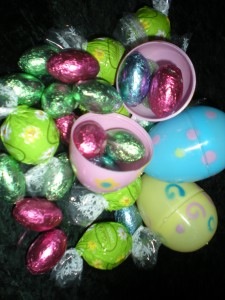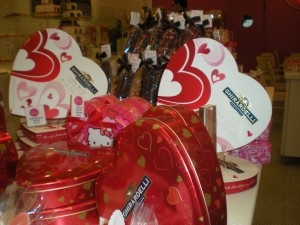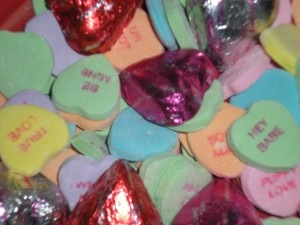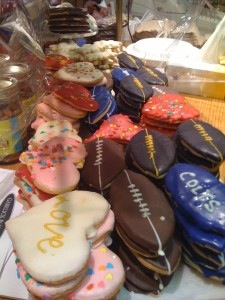 Easter Eggs – the Confectionary Type
Easter Eggs – the Confectionary Type
They’re everywhere and at every price point. Some are piped with flowers and others are wrapped in foil. You find them in chain stores, discount stores, and at high end chocolatiers. Easter is the second ranked holiday for candy purchases in the United States (just behind Halloween) and solid, hollow, and filled chocolate Easter eggs are one of the most popular choices of Easter candy.
Hollow and Solid Chocolate Easter Eggs
Today’s Easter eggs are mostly sweet chocolate made from cocoa solids, fat, sugar, and some form of milk. The first chocolate eggs were solid and made of a paste of ground roasted cacao beans. Hollow eggs didn’t come on the scene until sometime later when a type of “eating chocolate” was developed. By the turn of the 19th century the improved process of making chocolate and newer manufacturing methods made chocolate Easter eggs an Easter gift of choice.
Decorated with Flowers and Wrapped in Shiny Foil
John Cadbury make the first French Eating Chocolate in 1842 but the first Cadbury Easter Eggs didn’t arrive until 1875 and were a far cry from today’s Cadbury Crème egg (which now also comes with caramel, chocolate, and butterfinger filling). Early Cadbury eggs were smooth surfaced dark chocolate filled with dragees. Early decorated eggs were plain shells piped with chocolate and marzipan flowers. Cadbury Dairy Milk Chocolate appeared on the market in 1905 and helped to boost the sale of chocolate Easter eggs. Today’s chocolate Easter eggs are predominantly milk chocolate and include solid, hollow, decorated, and filled eggs.
Calories in Popular Types of Chocolate Easter Eggs
Chocolate is a high calorie, high fat food. Some of the most popular chocolate eggs:
Hershey’s Cadbury Chocolate Crème Easter Egg: 1 egg (39g), 180 calories, 8g Fat (5g saturated), 25g Carbs, 2g Protein
Hershey’s Cadbury Crème Egg, original milk chocolate with soft fondant crème center: 1 egg (39g), 170 calories, 6g fat (3.5g saturated), 28g Carbs, 2g Protein
Hershey’s Cadbury Mini Egg: solid milk chocolate eggs with a crispy sugar shell: 12 eggs (40g), 200 calories, 9g fat(5g saturated), 28g carbs, 2g protein
Hershey’s Milk Chocolate Eggs: 7 pieces, 200 Calories, 12g Fat (7 saturated), 24g Carbs, 3g Protein
Dove Silky Smooth Milk Chocolate Eggs: 6 eggs, 240 Calories, 14g Fat (8g saturated), 26g Carbs, 3g Protein
Dove Rich Dark Chocolate Eggs: 6 eggs (43g), 220 calories, 14g Fat (8 saturated), 26g carbs, 2g Protein
Reese’s Milk Chocolate and Peanut Butter Eggs: 5 pieces (38g), 190 Calories, 12g Fat (6 saturated), 21g Carbs, 4g Protein
M & M’s Milk Chocolate Speck-Tacular Eggs: 1/4 Cup (12 pieces), Calories: 210 Calories, 10g Fat (6 saturated), 29g Carbs, 2g Protein
Solid Milk Chocolate Easter Bunny: 2.5 oz, Calories: average 370
But Isn’t Chocolate Good For Me?
The health benefits in chocolate come from cocoa. Dark chocolate has a greater concentration of cocoa than milk chocolate. White chocolate, without any cocoa in it, is not really chocolate. In a recent study, German scientists followed 19,357 people for at least 10 years and found that those who ate the most chocolate, (average 7.5 grams a day or .26 oz), had lower blood pressure and a 39% lower risk of having a heart attack or stroke than people who ate the smallest amount (1.7 grams or .06 oz a day). Chocolate, especially dark chocolate, can be heart healthy if it replaces an unhealthy, high calorie snack, but there is still no recommendation for the amount to be consumed to produce health benefits.
SocialDieter Tip:
Chocolate, especially dark chocolate, contains flavonols which have antioxidant qualities and other positive influences on heart health. However, those delicious, pastel wrapped chocolate Easter eggs are caloric and moderately high in fat, one-third of it the type of saturated fat that is not heart healthy. Extra ingredients like crème and caramel fillings can add lots of extra fat and calories. There is no recommended serving size of chocolate to help gain cardiovascular benefits. If you are going to choose a sweet treat, chocolate, especially dark chocolate with a high cocoa concentration, might be a healthier choice than other types of sweets. As with most foods, especially treats –particularly treats associated with a holiday or celebration when we often tend to give ourselves license to indulge – if you are going to enjoy your chocolate, plan on how much you are going to eat, build it into your caloric allowance, stick to your plan, eat in moderation, and enjoy every bit of it.



